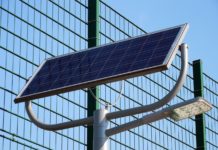There is an increasingly intense relationship between technology and environment, through which systems are established that provide great benefits to natural development, including those that promote sustainability and those that seek to facilitate usual processes to achieve better results with a lower investment of money and time. Let's get to know some of the most useful examples that are giving the best results right now.

Article Content
Drones and their benefits in the field of technology and the environment
Air shipments are the most efficient if you need your cargo or documents to arrive quickly and securely. drones They have meant a radical change in different fields framed in the environment such as agriculture, livestock, care and maintenance of forests, monitoring the evolution of flora and fauna, etc.
In fact, some of the tasks they simplify are:
- Fumigation of large areas or in inaccessible areas.
- Fauna control and monitoring of specimens.
- Access to control and monitoring of fauna in places that are difficult to access.
- Control of flora and pests in non-accessible areas.
- Grazing and monitoring of livestock.
- Checking especially complicated areas to determine risks.
- Help and rescue.
Vertical forests invade cities
The concept of vertical forest It is a solution that is increasingly being adopted by large cities throughout the world.
The main problem with cities is that they increasingly extend further and further, so that concrete and asphalt end up occupying the space that was previously destined for nature.
This means that there are areas where the shape of a leaf is practically no longer remembered while pollution accumulates, therefore, this idea seeks to replace this negative advance to repopulate occupied areas again by cities but guaranteeing the coexistence between both concepts.
Basically it's about add plants to buildings, offering a greener image while helping to act as lung of the city purifying pollution.
Biometric architecture, another example of technology and environment
It is based on the construction of buildings and homes capable of autonomously regulating their temperature, thus guaranteeing the use of natural resources, which translates into a considerable reduction in the consumption of energy such as electricity, gas or oil.
Another of the premises of this type of architecture is to achieve Make the most of natural light, achieving from a general perspective reducing the impact of any building and its inhabitants on the environment.
A single drone can monitor thousands of hectares accurately, processing thousands of data and giving us information regarding the conditions of the land, and thus obtain data such as hydration, temperature or the growth rate of crops. We can even detect a specific location where plant diseases are occurring prematurely. This way, pests can be avoided that ruin part of the harvest and leave the farmer without thousands of infected and useless hectares.
Renewable and clean energies
There are many systems that allow us to enjoy energy in a more ecological and clean way:
- Photovoltaic: use of the sun to produce electricity.
- Solar thermal: use of the sun to heat water for DHW, heating and air conditioning.
- Wind: energy production taking advantage of the wind.
- Geothermal: obtaining energy from the interior of the Earth.
- Hydraulic energy: we generate energy by taking advantage of the movement of water in rivers.
There are many other renewable energies such as tidal energy, wave energy, etc., although they are more complicated and out of the scope of most projects due to their limitations.
These are just a few examples of how technology and environment manage to come together to achieve truly efficient solutions, thus guaranteeing a better balance and providing advantages such as greater sustainability, reducing man's impact on Earth and of course the simplification of complex tasks.
Industrial Engineering student and lover of writing and technology, for several years I have participated in various pages with the aim of always keeping myself informed of the latest trends and contributing my grain of sand in this immense dissemination network that we know as the Internet.





